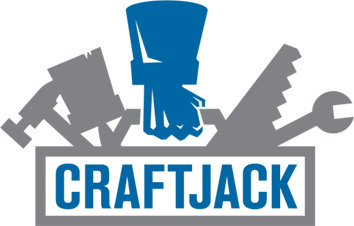Leads Deconstructed: Turn Opportunities Into Jobs

I’m sure you’ve been there, a lead comes through and might be weeks or months out from starting the project. While having the instant gratification of getting a homeowner to start their job soon is great, more often than not, homeowners are still gathering information, such as cost and time estimates, on their project.
Instead of dismissing them as a job lost, start building a relationship with them that can help you win the job in the end. Here’s how you can turn a long-term opportunity into a job.
Are you a contractor looking for more leads in your area? Sign up with CraftJack today to connect with homeowners near you who are planning or ready to hire for their project.

Determine Where They’re At
While leads might come your way in various stages of the buyer pipeline, not everyone is ready to hire. It’s important to understand that for homeowners, getting a quote (and possibly multiple quotes from different contractors) is an important part of the planning stage as they prepare to hire.
However, having a homeowner who isn’t ready to hire immediately doesn’t mean the lead is lost. This is the time when you must utilize your sales expertise as a pro in the field and become their go-to contractor as the home improvement project comes to fruition. These leads can be known as pipeline leads and are important for your business.
“Pipeline leads are homeowners who have expressed interest in having a service done in the near future,” Anthony Zheng, CraftJack account manager, said. “By filling their books with prospective new clients, contractors can create a constant flow of opportunities.”
Often, determining what stage the homeowner is at will start with a phone call, and even possibly an estimate. Some homeowners might be further along in their project and ready to hire, while others might need to further prepare and plan before determining who to hire. From here, it’s your job to work with them and show them how they can make their project happen.
Educate The Lead
One of the biggest steps in the planning phase is educating the customer. They are likely serious about the project, as they’ve chosen to reach out. However, they’ll still need more information on the scope and work that is to be done.
“Ask open-ended questions and build rapport with potential new clients to turn this pipeline lead into a job,” Zheng said.
Tell them about the details they may be missing from their project and what areas they may have missed in their personal planning. Discuss their concerns and needs, answering any questions that come up. They’ll be looking to you as you’re the expert.
Personalize The Estimate
When you’ve determined the scope of the project, you’ll need to give an estimate. This is important to many homeowners in determining the timing and budget of their project. Make sure to add personalization to their estimate, with line items that relate to their needs. Adding their names and project details can go a long way.
“Be personable, don’t be pushy,” Peter Swanson, senior account manager, and team lead said. “Most importantly, be informative and transparent. You are the expert and homeowners want to be able to trust you as a person, but also want to know their money is going to someone who is going to do quality work.”
Quote Promptly
Not only is it important to personalize the estimate, but it helps to send the estimate over within a week to begin the next step, which is following up and further planning the project. Don’t delay on this step. Similarly, to contacting the lead quickly, getting the estimate over to the homeowner quickly can help increase your chances of winning the job.
Follow-Up
Following up is one of the steps that will turn a lead you are nurturing into a job. After you send the estimate, follow up with the homeowner and address their timeline.
“Follow up with the lead after two weeks to keep your company top of mind,” Ana Marie Rivera, CraftJack account manager, said.
After that, pick a few dates based on their timeline of the project. If they let you know they plan on getting started two months from now, make a follow-up call a month later to solidify their plans. Soon enough, you’ll be turning the lead into a job!
Conclusion
It’s important to not get discouraged when you hear that a homeowner isn’t looking to start a project right away. You’ll need to put in some extra work to win the job, but you’ll also win a customer for life. As a final piece of advice, Swanson has the reminder that every job is different.
“Because leads are people, they are not consistent,” He said. “Some leads want the job done right away, which is great. Other leads want the job done in the future, which might not be as ideal as a lead, who wants the service done right away, but they still have a ton of value. Building your sales pipeline is important in any aspect of sales, pipeline leads help fill your calendar with follow-ups or appointments in the future.”
Looking for more in this series? Read Leads Deconstructed: How To Define A Lead.



